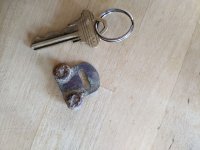KY Hiker
Bronze Member
- Oct 28, 2014
- 1,537
- 3,220
- Detector(s) used
- Whites
- Primary Interest:
- All Treasure Hunting
I guess your speaking in general terms of following the ridges. They are not all connected... in other words the buffalo would have to come down for licks and water sources. Just looking at the topography of East KY, other than the Pine Mt. ridge, at some point you have to come down to get up to the next ridge.








